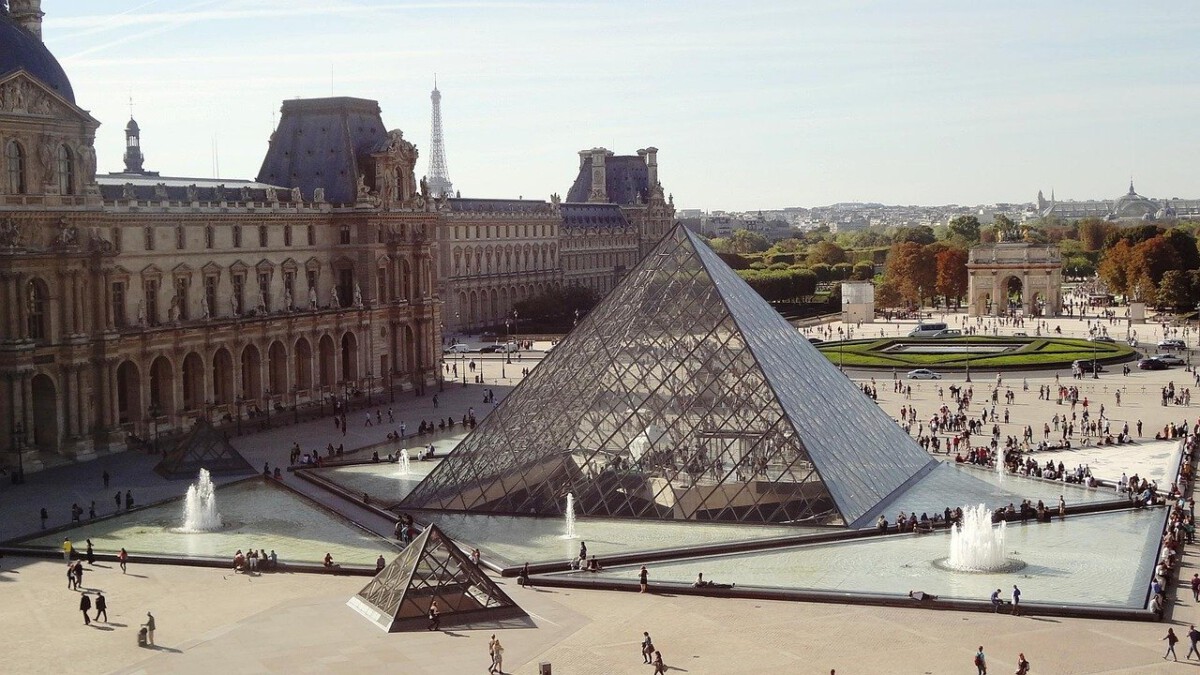Paris, France

Paris, despite its romantic image, has developed a reputation for being less than hospitable to outsiders. According to a 2023 European Travel Commission survey, 45% of tourists reported feeling unwelcome, citing curt service in cafes and shops as a main factor. The city’s immense popularity has led to overcrowded museums, congested streets, and a sense of being herded through major attractions. Many locals, overwhelmed by the constant flow of visitors, have become noticeably impatient, especially during the high season. This frustration sometimes spills over into public interactions, making tourists feel more like intruders than guests. Social media and travel forums are filled with stories of unfriendly waiters or brusque taxi drivers, making it clear that not everyone is rolling out the red carpet. The city has tried to address these issues with hospitality training programs, but the results have been mixed at best. For many, the magic of Paris is dulled by the chilly reception.
Venice, Italy

Venice’s labyrinth of canals and iconic piazzas draw millions each year, but the locals have reached their breaking point. In 2024, the city introduced a tourist tax in hopes of curbing the overwhelming influx. While this policy was meant to help, it has also signaled to visitors that their presence is more burden than blessing. The Italian National Institute of Statistics found that 60% of residents feel tourism has eroded the city’s character and quality of life. Many Venetians openly express their irritation at being outnumbered by tourists, especially during the summer. It’s common to see anti-tourist graffiti in popular districts, and shopkeepers sometimes react with open disdain to travelers asking for directions or snapping photos. The commercialization of Venice has left locals feeling like strangers in their own city, and that tension is often palpable. Despite the beauty of its setting, a visit can feel transactional and cold, rather than warm and welcoming.
Barcelona, Spain

Barcelona’s allure as a Mediterranean hotspot has come at a price: locals are increasingly fed up with the crowds. In 2023, the Barcelona Tourism Board reported that 70% of residents believe tourists worsen noise and pollution, directly impacting their daily lives. Efforts to limit visitor numbers in hotspots like La Rambla and Park Güell have only heightened tensions. In neighborhoods such as Gràcia, protests against overtourism are common, with banners and graffiti telling tourists to “go home.” Travelers often recount feeling unwelcome, especially when venturing off the main tourist track. The once-friendly atmosphere has been replaced with a sense of weariness and frustration. Some shopkeepers and restaurant staff are openly cold, serving tourists quickly and with minimal interaction. This tension has become part of the Barcelona experience, leaving many visitors surprised by the lack of the famed Spanish warmth.
Amsterdam, Netherlands

Amsterdam’s lively canals and coffee shops attract millions, but not all locals are happy about it. A 2024 Amsterdam Tourism Board survey revealed that 65% of residents think tourism has lowered their quality of life. The influx has led the city to enact strict regulations on short-term rentals and to limit tourist access to certain neighborhoods. In areas like the Red Light District, residents have staged protests, demanding more privacy and peace. Visitors often report feeling out of place, sensing that their presence is resented, especially in less commercialized parts of the city. Some local businesses have adopted a no-nonsense approach, serving tourists quickly and with little patience for questions. The city’s “Enjoy & Respect” campaign, while designed to encourage good behavior, also sends a message that tourists are being closely watched. For many, Amsterdam feels less like a playground and more like a place where you’re walking on eggshells.
Dubrovnik, Croatia

Dubrovnik’s Old Town, famous for its medieval walls and Game of Thrones fame, has become a victim of its own success. In 2023, the city welcomed over 1.5 million tourists, overwhelming its infrastructure and sparking resentment. A local survey found that 75% of residents believe tourism has negatively impacted their lives, from rising rents to crowded streets. Many visitors have noticed that shopkeepers and restaurant staff often appear indifferent or even annoyed, especially during peak cruise ship arrivals. Some locals avoid the Old Town altogether, leaving tourists to navigate an environment that feels staged and impersonal. Restrictions on daily visitor numbers have been put in place, but the mood remains tense. The city’s charm is still present, but the lack of genuine hospitality can leave a sour taste for those expecting a warm Croatian welcome.
Santorini, Greece

Santorini is famous for its whitewashed villages and breathtaking sunsets, yet the island’s hospitality has frayed in recent years. A 2024 Greek Ministry of Tourism study found that 55% of tourists noticed unfriendliness from locals during high season. The massive influx of visitors strains the island’s infrastructure, leading to long waits and crowded buses. Many residents, frustrated by the constant crowds, have grown impatient, particularly with tourists unaware of local customs. Some travelers have reported being ignored or served with minimal interaction in shops and tavernas. The sense that tourists are only tolerated, rather than welcomed, is not uncommon. The island’s beauty remains undeniable, but the atmosphere can feel strained, especially in famous spots like Oia. With the pressure of overtourism, both sides are left feeling shortchanged.
Istanbul, Turkey

Istanbul’s position as a bridge between East and West makes it a magnet for visitors, but not all experiences are positive. Reports from 2023 by the Turkish Statistical Institute indicate that 50% of tourists felt uncomfortable interacting with locals, often citing aggressive sales tactics in markets. Street vendors and shopkeepers, perhaps overwhelmed or desperate for business, can be pushy, leaving some travelers uneasy. The city’s frenetic pace and crowded attractions can also be overwhelming, contributing to feelings of alienation. In some neighborhoods, local residents have grown weary of the constant tourist presence, resulting in curt or indifferent service. Language barriers add another layer of difficulty, with misunderstandings sometimes leading to frustration on both sides. While many Istanbulites are genuinely warm, the sheer scale of tourism has made authentic connections harder to find. The city’s hospitality, once legendary, now feels hit or miss.
London, England

London’s cosmopolitan energy is undeniable, but its hospitality isn’t always as vibrant. According to a 2024 Visit London survey, 40% of tourists reported that locals seemed unfriendly or disinterested. The city’s fast-paced lifestyle leaves little room for small talk or helping lost travelers. Crowded public transport and packed tourist sites can make visitors feel like an inconvenience rather than guests. Rising living costs have led to growing resentment, particularly in central neighborhoods where tourists outnumber residents. Some shopkeepers and service workers, facing long hours and low wages, can appear brusque or impatient. In hotspots like Covent Garden or Soho, tourists often sense that their presence is met with annoyance rather than enthusiasm. While London offers world-class attractions, the warmth of its welcome can feel as chilly as its weather.
New York City, USA

New York City’s reputation for being “tough” extends to its treatment of tourists. A 2023 NYC & Company report showed that 30% of visitors found locals unapproachable or even rude. The city’s relentless pace leaves little time for pleasantries, and transactions often feel rushed or impersonal. In some neighborhoods, especially outside the main tourist zones, residents can be openly dismissive. The rise in crime rates over the past two years has made both tourists and locals more cautious, further widening the gap between them. Many visitors recount experiences of being ignored or brushed off when asking for help. While the city’s diversity is celebrated, it also means that people are busy getting on with their lives, leaving little room for the slower pace that tourists might expect. For those seeking that famous New York hospitality, reality can be a bit of a shock.
Tokyo, Japan

Tokyo’s reputation for order and politeness sometimes masks a more complicated reality for tourists. A 2024 Japan National Tourism Organization survey found that 25% of foreign visitors felt isolated due to language barriers. While many locals are eager to help, cultural differences often make interactions awkward or confusing. Strict social norms can leave tourists feeling like outsiders if they inadvertently break a rule. In busy districts, the sheer volume of people can be overwhelming, and some residents are visibly impatient with lost or confused visitors. Customer service, while efficient, can sometimes lack the warmth or friendliness that Western tourists expect. Some travelers report feeling invisible, especially in less touristy neighborhoods. Tokyo remains a fascinating destination, but the welcome isn’t always as warm as its neon lights suggest.






